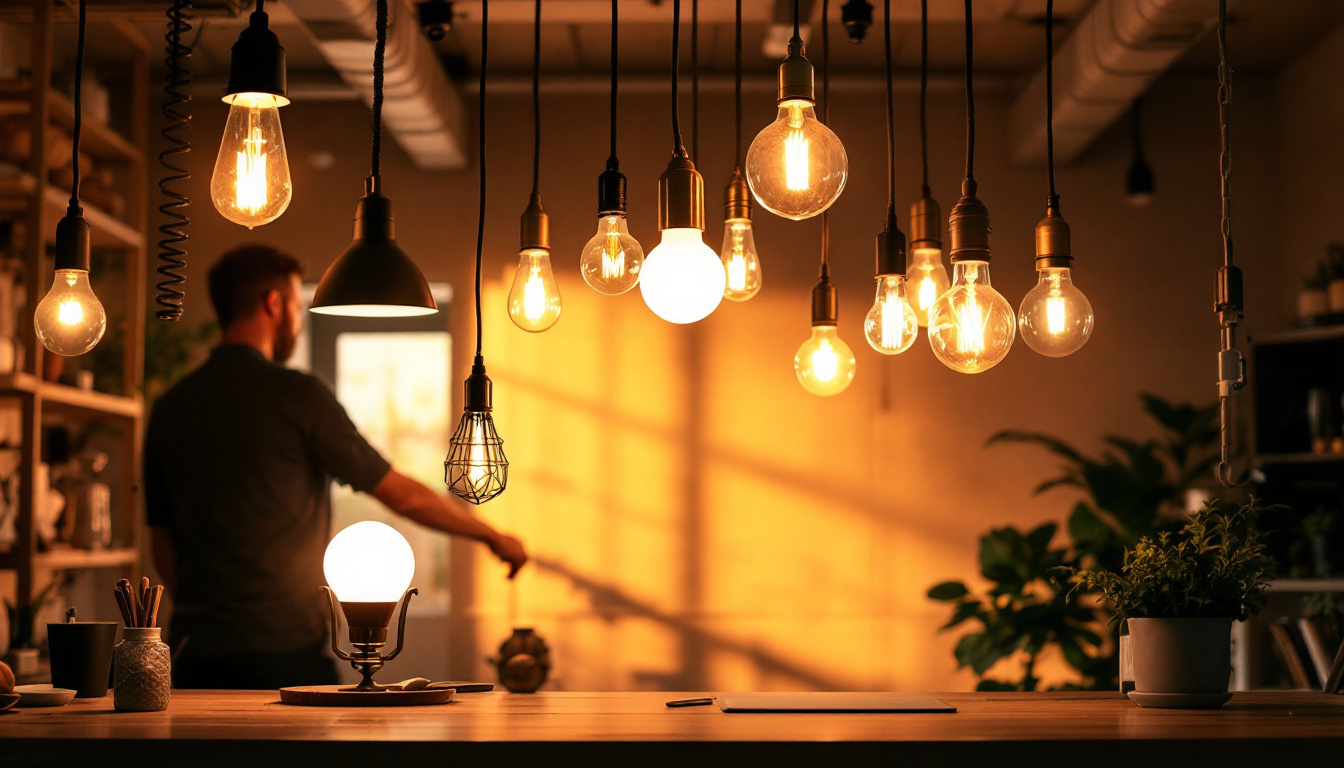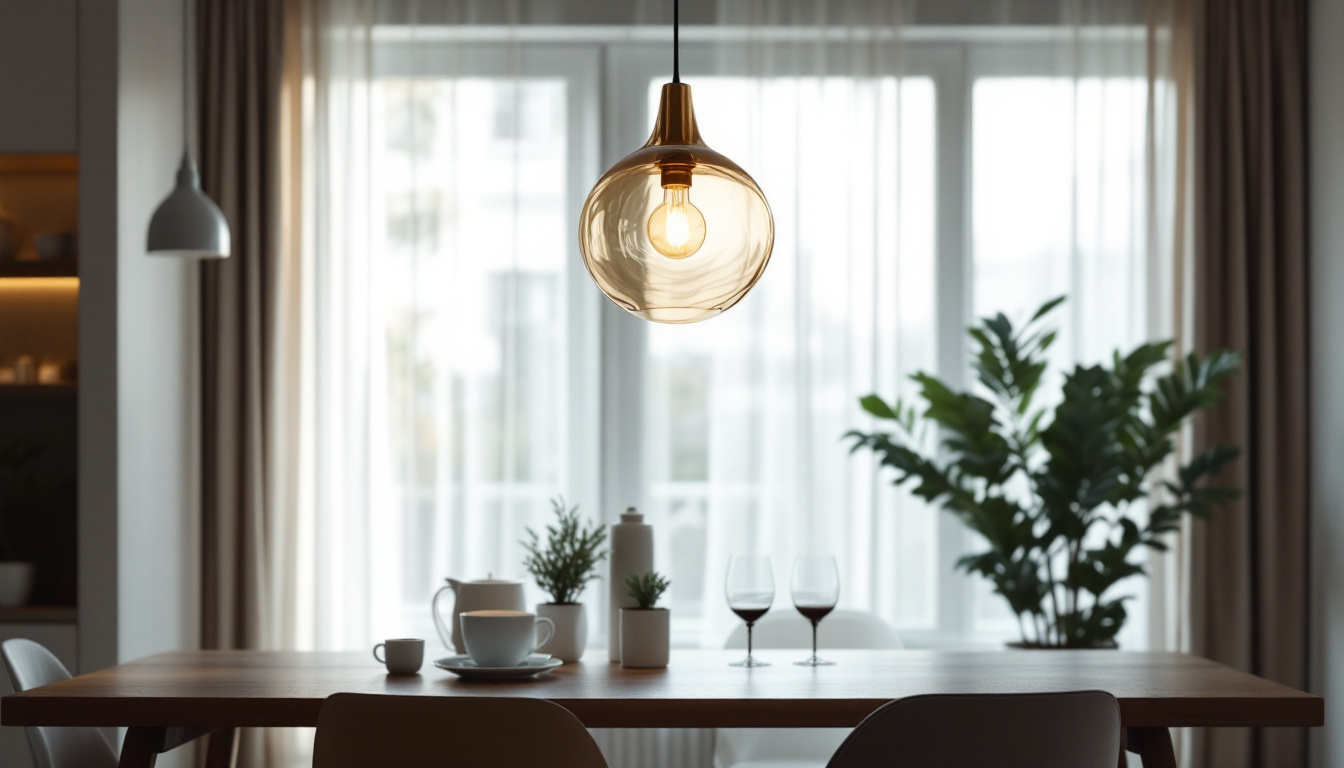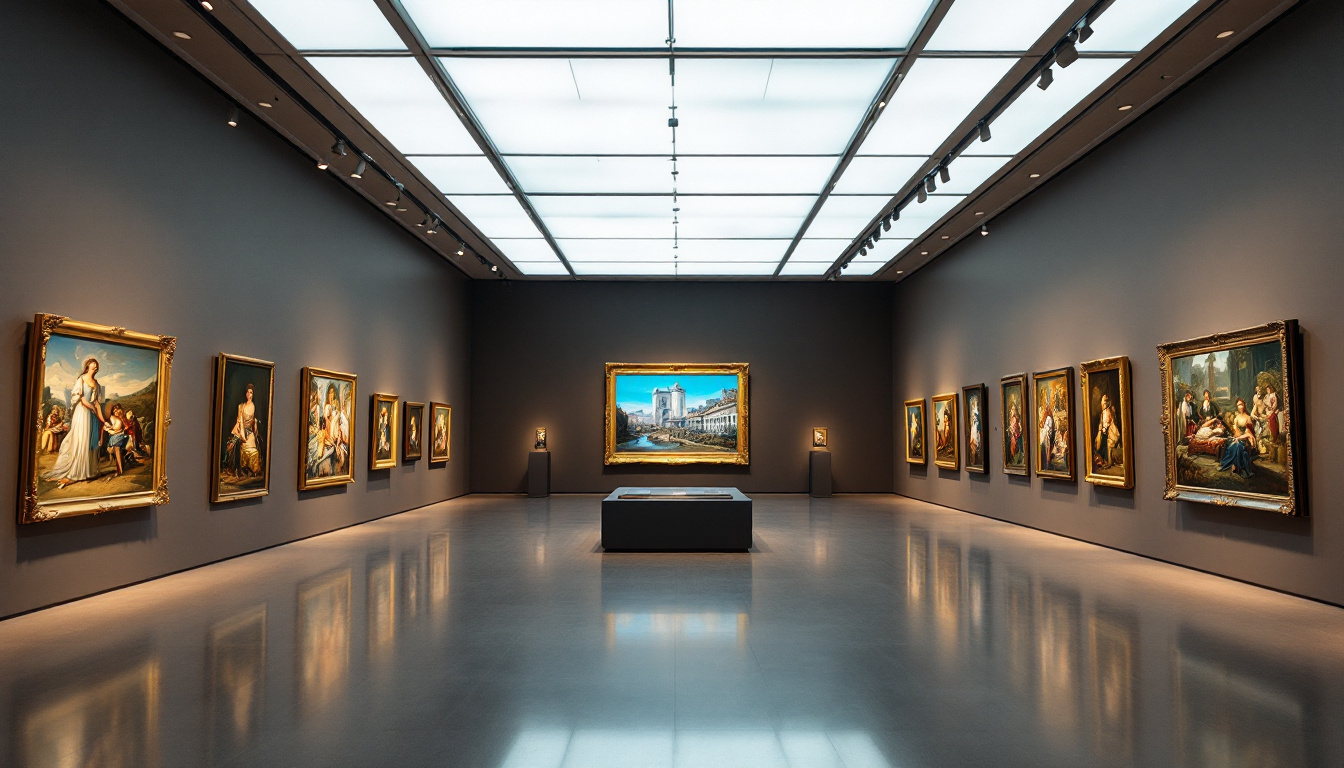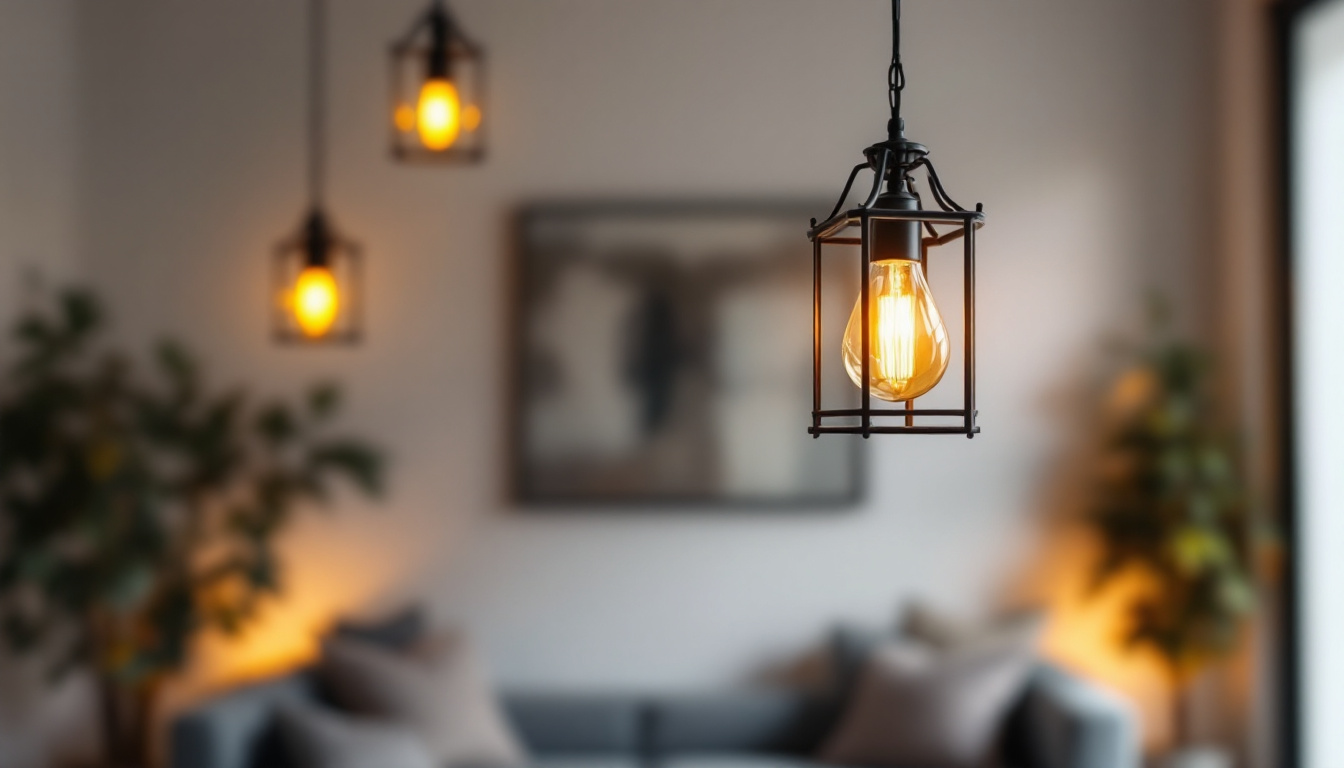
In the world of lighting installation, the choice of lights and bulbs plays an integral role in the success of any project. Whether it’s for residential, commercial, or industrial settings, understanding the nuances of different lighting options can enhance not only the aesthetic appeal but also the functionality and energy efficiency of the space. This article delves into the various aspects of lights and bulbs, exploring how they can significantly improve lighting installation projects.
Choosing the right bulb is more than just a matter of preference; it affects the overall performance and efficiency of the lighting system. Different types of bulbs offer unique benefits and drawbacks that can influence the outcome of a project. The right choice can enhance the aesthetic appeal of a space while also ensuring that it meets functional requirements, such as brightness and color temperature. Therefore, understanding the specific needs of a project is essential in making an informed decision.
There are several types of bulbs available on the market, each designed for specific applications. Incandescent bulbs, for example, provide warm light but are not energy-efficient. Their warm glow can create a cozy atmosphere, making them popular in residential settings. However, their short lifespan and high energy consumption make them less desirable for long-term use. On the other hand, LED bulbs offer a longer lifespan and lower energy consumption, making them a popular choice for modern installations. They are available in various colors and brightness levels, allowing for greater flexibility in design.
Fluorescent bulbs are another option, commonly used in commercial settings due to their efficiency and brightness. They are particularly effective in large spaces such as offices and warehouses, where bright, even lighting is essential. Understanding these differences is crucial for contractors to recommend the best options to their clients. Additionally, advancements in technology have led to the development of smart bulbs, which can be controlled remotely and programmed for various lighting scenarios, further expanding the possibilities for both residential and commercial applications.
Energy efficiency is a key consideration in today’s lighting projects. With rising energy costs and increasing environmental awareness, clients are often looking for sustainable solutions. LED bulbs stand out in this regard, as they consume significantly less power compared to traditional incandescent bulbs. In fact, they can use up to 80% less energy, which not only reduces electricity bills but also decreases the carbon footprint associated with energy production.
Moreover, many governments and organizations offer incentives for using energy-efficient lighting solutions, making it financially beneficial for clients. These incentives can include tax rebates, grants, or subsidies that encourage the transition to more sustainable options. Contractors who can provide expertise in this area will not only enhance their reputation but also contribute positively to the environment. By staying informed about the latest trends and technologies in lighting, they can help clients make choices that align with both their budget and their sustainability goals, fostering a more eco-conscious approach to design and construction.
Color temperature is another critical factor that can dramatically affect the ambiance of a space. Measured in Kelvin (K), color temperature influences how warm or cool the light appears, impacting the mood and functionality of the environment. The perception of color temperature can also vary based on the surrounding colors and materials in a room, making it essential to consider the entire design scheme when selecting lighting.
Warm lighting, typically ranging from 2700K to 3000K, creates a cozy and inviting atmosphere, making it ideal for residential settings such as living rooms and bedrooms. This type of lighting is often associated with relaxation and comfort, encouraging social interaction and a sense of well-being. In contrast, cool lighting, which ranges from 4000K to 6500K, is often used in commercial spaces where bright, clear visibility is essential, such as offices and retail environments. The crispness of cool lighting can enhance focus and productivity, making it a popular choice for workspaces where tasks require attention to detail.
Contractors must be adept at advising clients on the appropriate color temperature for their specific needs. This understanding can significantly enhance the satisfaction of end-users and ensure that the lighting serves its intended purpose effectively. Furthermore, the choice of color temperature can also influence energy efficiency; for instance, LED lights with a cooler temperature often provide higher lumens per watt, making them a more sustainable option for energy-conscious clients.
The Color Rendering Index (CRI) is another important aspect to consider when selecting bulbs. CRI measures a light source’s ability to accurately render colors compared to natural light. A higher CRI rating indicates better color accuracy, which is crucial in settings like art galleries or retail stores where color perception is vital. For instance, in a clothing store, the right CRI can make colors appear more vibrant and true to life, potentially influencing a customer’s purchasing decision.
Contractors should educate their clients about the significance of CRI, especially when the quality of light can impact product presentation or artistic expression. By doing so, they can help clients make informed decisions that enhance the overall effectiveness of their lighting installations. Additionally, understanding CRI can aid in selecting the right lighting for specialized applications, such as photography studios or medical facilities, where accurate color representation is paramount for both aesthetics and functionality.
As technology advances, innovative lighting solutions are becoming increasingly prevalent. smart lighting systems, for instance, are revolutionizing how spaces are illuminated and controlled.
Smart lighting systems allow users to control their lighting through mobile applications or voice commands, offering convenience and flexibility. These systems can be programmed to adjust brightness and color temperature based on the time of day or specific activities, enhancing the user experience.
For contractors, integrating smart lighting solutions into projects can set them apart from competitors. Clients are often looking for modern, tech-savvy options that can improve their quality of life, and being able to provide these solutions can lead to increased customer satisfaction and loyalty.
Adaptive lighting technologies, which adjust automatically based on environmental factors such as natural light levels, are also gaining traction. These systems not only enhance comfort but also contribute to energy savings, making them an attractive option for both residential and commercial projects.
Understanding these technologies and their benefits allows contractors to better serve their clients and stay ahead in a rapidly evolving industry.
Effective lighting design goes beyond simply choosing the right bulbs; it involves a comprehensive understanding of the space and its intended use. Thoughtful design can transform a mundane area into a vibrant and functional environment.
A layered lighting approach involves using multiple light sources to create depth and dimension within a space. This technique combines ambient, task, and accent lighting to achieve a balanced and visually appealing environment.
Contractors should encourage clients to consider how different types of lighting can work together to enhance functionality and aesthetics. For instance, combining overhead fixtures with wall sconces and table lamps can create a warm, inviting atmosphere while providing adequate task lighting.
Another important aspect of lighting design is the ability to highlight architectural features. Strategic placement of lights can draw attention to unique elements within a space, such as artwork, textured walls, or architectural details.
By understanding how to use lighting to accentuate these features, contractors can elevate the overall design of a project, making it more appealing to clients and end-users alike.
Safety and compliance are paramount in any lighting installation project. Adhering to local codes and regulations ensures not only the safety of the installation but also the longevity of the lighting system.
Each region has specific codes governing electrical installations, including lighting. Familiarity with these codes is essential for contractors to avoid legal issues and ensure that installations are safe and effective.
Contractors should stay updated on any changes to local regulations and educate their clients about the importance of compliance. This proactive approach can prevent potential hazards and ensure the project meets all necessary standards.
Implementing best practices during installation is crucial for achieving optimal results. This includes proper wiring techniques, ensuring adequate ventilation for fixtures, and using the correct materials for each project.
Contractors who prioritize safety and quality in their installations will build a reputation for reliability and professionalism, leading to repeat business and referrals.
Effective communication with clients is vital throughout the lighting installation process. Educating clients about their options and the benefits of different lighting solutions can lead to more informed decisions and greater satisfaction.
Adopting a consultative approach allows contractors to better understand the specific needs and preferences of their clients. By asking questions and actively listening, contractors can tailor their recommendations to align with the client’s vision and requirements.
This personalized approach not only fosters trust but also enhances the overall client experience, making them more likely to recommend the contractor to others.
Providing post-installation support is equally important. Offering guidance on maintenance, troubleshooting, and potential upgrades can help clients maximize the longevity and efficiency of their lighting systems.
By being available for follow-up questions and support, contractors can further solidify their relationship with clients, leading to increased loyalty and future business opportunities.
As the lighting industry continues to evolve, staying informed about the latest trends and technologies is essential for contractors. By understanding the importance of lights and bulbs, embracing innovative solutions, and prioritizing client education, contractors can enhance their lighting installation projects significantly.
Incorporating energy-efficient options, adaptive technologies, and thoughtful design considerations not only improves the quality of installations but also contributes to a more sustainable future. Ultimately, the success of lighting installation projects lies in the hands of skilled contractors who are committed to excellence and client satisfaction.
By focusing on these key areas, lighting contractors can position themselves as leaders in the industry, ready to tackle the challenges and opportunities that lie ahead.
Ready to elevate your lighting installation projects with the best in spec-grade lighting? Look no further than LumenWholesale, where we provide contractors with exceptional lighting products at unbeatable wholesale prices. Say goodbye to local distributor markups and hello to our extensive selection that meets the highest industry standards. With free shipping on bulk orders, you can trust that you’re getting premium lighting at the best value — all without hidden fees. Make your next project shine with the quality, affordability, and convenience of Wholesale Lighting at the Best Value. Partner with LumenWholesale today and light the way to a brighter future.

Discover how solar yard lamp posts are revolutionizing the lighting industry with their eco-friendly technology and cost-saving benefits.

Discover how lighting contractors are transforming spaces with unique pendant lamps.

Explore the pros and cons of museum lighting options in this insightful guide for contractors.

Discover the essential guide for lighting contractors with our comprehensive handbook on hanging pendant lanterns.